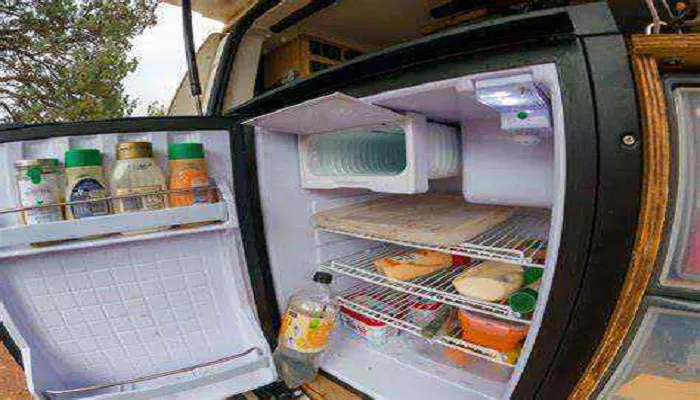A 12V compressor fridge is a popular choice for those who need reliable refrigeration in mobile or off-grid settings, such as RVs, boats, campervans, or even remote cabins. These fridges are designed to operate efficiently on low-voltage DC power, making them ideal for environments where access to standard AC power is limited. However, understanding the power consumption of a 12V compressor fridge is crucial for ensuring that your energy supply can meet the demands of the appliance without running out of power prematurely. This article will provide a detailed, professional analysis of how much power a 12V compressor fridge uses, factors affecting its energy consumption, and tips for optimizing its efficiency.
How a 12V Compressor Fridge Works
Before diving into power consumption, it’s important to understand how a 12V compressor fridge operates. Unlike traditional absorption fridges, which use heat to drive the cooling process, a compressor fridge relies on a mechanical compressor to circulate refrigerant through a closed loop. This process absorbs heat from inside the fridge and releases it outside, maintaining a cool interior temperature.
The compressor is powered by a 12V DC power source, typically a battery, which is often charged by solar panels, a vehicle’s alternator, or a shore power connection. The fridge’s efficiency and power consumption depend on the compressor’s design, the ambient temperature, and how often the compressor cycles on and off.
Power Consumption Basics
Voltage (V): The fridge operates at 12V DC.
Current (A): The amount of current the fridge draws when the compressor is running.
However, this only tells you the power consumption while the compressor is running. Since the compressor doesn’t run continuously, you need to factor in its duty cycle (the percentage of time the compressor is active) to estimate daily energy usage.
Average Power Consumption of a 12V Compressor Fridge
- A small 20-liter fridge might use around 0.7kWh per day.
- A medium 40-liter fridge might use around 1.2kWh per day.
- A large 60-liter fridge might use around 2.0kWh per day.
These values are based on typical usage in moderate ambient temperatures (around 25°C or 77°F). In hotter conditions or with frequent door openings, energy consumption can increase significantly.
Factors Affecting Power Consumption
Several factors influence how much power a 12V compressor fridge uses. Understanding these factors can help you optimize the fridge’s efficiency and reduce energy consumption.
Ambient Temperature
The ambient temperature is one of the most significant factors affecting power consumption. In hotter environments, the fridge’s compressor must work harder and run longer to maintain the desired internal temperature. For example, a fridge that consumes 1.2kWh per day at 25°C might use 1.8kWh per day at 35°C.
Thermostat Setting
The temperature setting of the fridge also plays a role. Lowering the thermostat setting increases the compressor’s workload, leading to higher energy consumption. Setting the fridge to a slightly higher temperature (e.g., 4°C instead of 2°C) can reduce power usage without compromising food safety.
Frequency of Door Openings
Every time the fridge door is opened, warm air enters, and the compressor must work to cool the interior again. Minimizing door openings and keeping the door closed as much as possible can significantly reduce energy consumption.
Fridge Load
A fully stocked fridge retains cold better than an empty one because the stored items act as thermal mass. However, overloading the fridge can restrict airflow and make the compressor work harder. Striking the right balance is key.
Insulation Quality
High-quality insulation reduces heat transfer between the fridge’s interior and exterior, allowing the compressor to run less frequently. Modern 12V compressor fridges are designed with efficient insulation, but older models or poorly maintained units may consume more power.
Compressor Efficiency
The efficiency of the compressor itself is a critical factor. Modern fridges often use advanced compressors (e.g., Danfoss or Secop compressors) that are designed to minimize energy consumption while maintaining reliable cooling performance.
Calculating Daily Energy Consumption
Determine the compressor’s running current (A): Check the fridge’s specifications or use a multimeter to measure the current draw when the compressor is running.
Calculate the running power (W): Multiply the running current by 12V.
Estimate the duty cycle (%): The duty cycle is the percentage of time the compressor runs over a 24-hour period. For example, if the compressor runs for 6 hours a day, the duty cycle is 25%.
Calculate daily energy consumption (Wh): Multiply the running power by the duty cycle and by 24 hours.
Tips for Reducing Power Consumption
Keep the fridge in a cool location: Avoid placing the fridge in direct sunlight or near heat sources.
Pre-cool items before storing: Allow hot items to cool to room temperature before placing them in the fridge.
Maintain proper ventilation: Ensure adequate airflow around the fridge’s condenser and compressor to prevent overheating.
Use a fridge cover: In hot environments, a reflective cover can reduce heat absorption.
Regularly defrost the fridge: Ice buildup can reduce efficiency, so defrost the fridge as needed.
Conclusion
A 12V compressor fridge is an efficient and reliable cooling solution for mobile and off-grid applications. Its power consumption typically ranges from 0.7kWh to 2.4kWh per day, depending on factors such as ambient temperature, thermostat setting, and usage patterns. By understanding these factors and following best practices, you can optimize the fridge’s energy efficiency and ensure that your power supply meets its demands. Whether you’re planning a long road trip or setting up a remote cabin, a well-managed 12V compressor fridge can provide reliable cooling without draining your energy resources.

